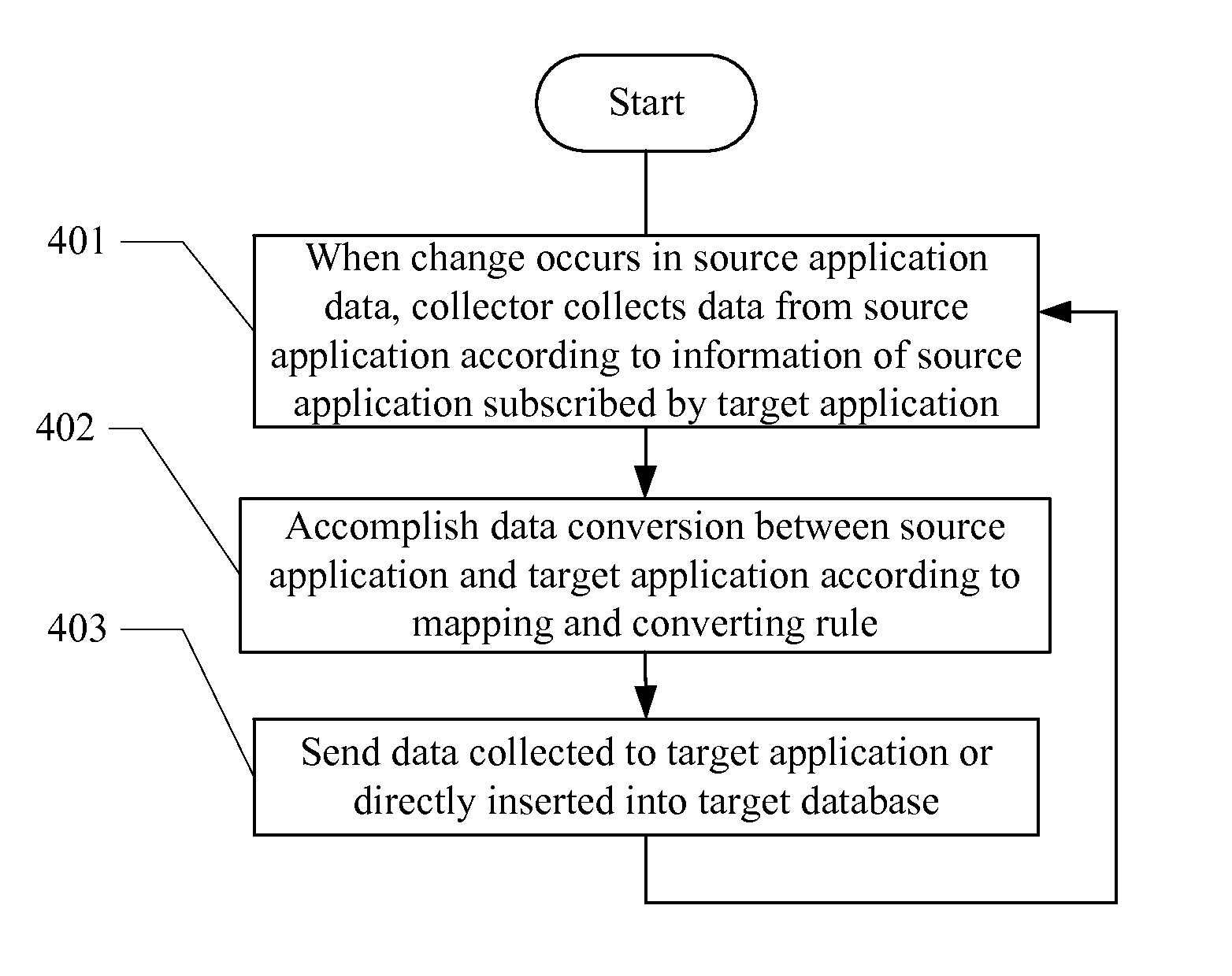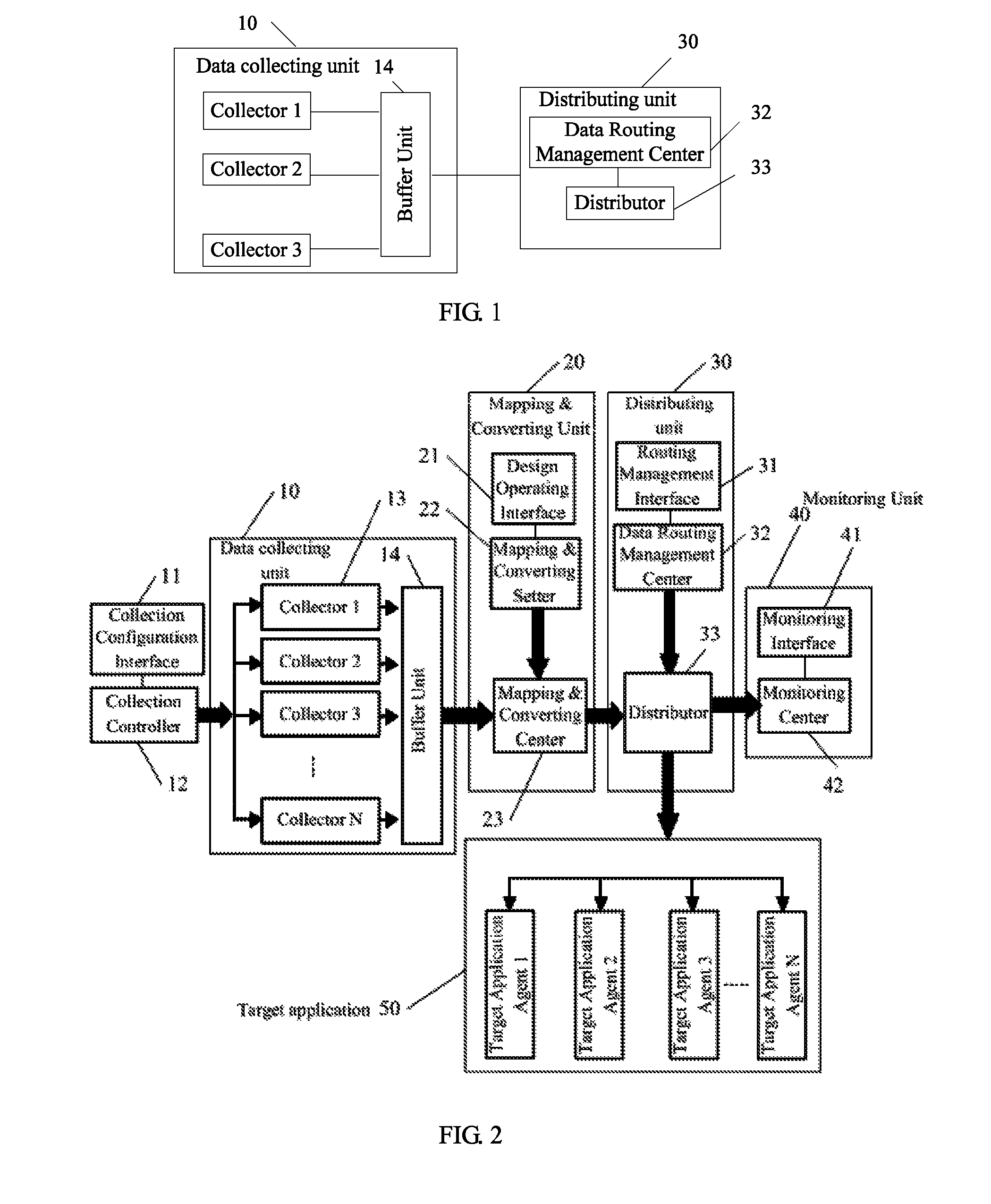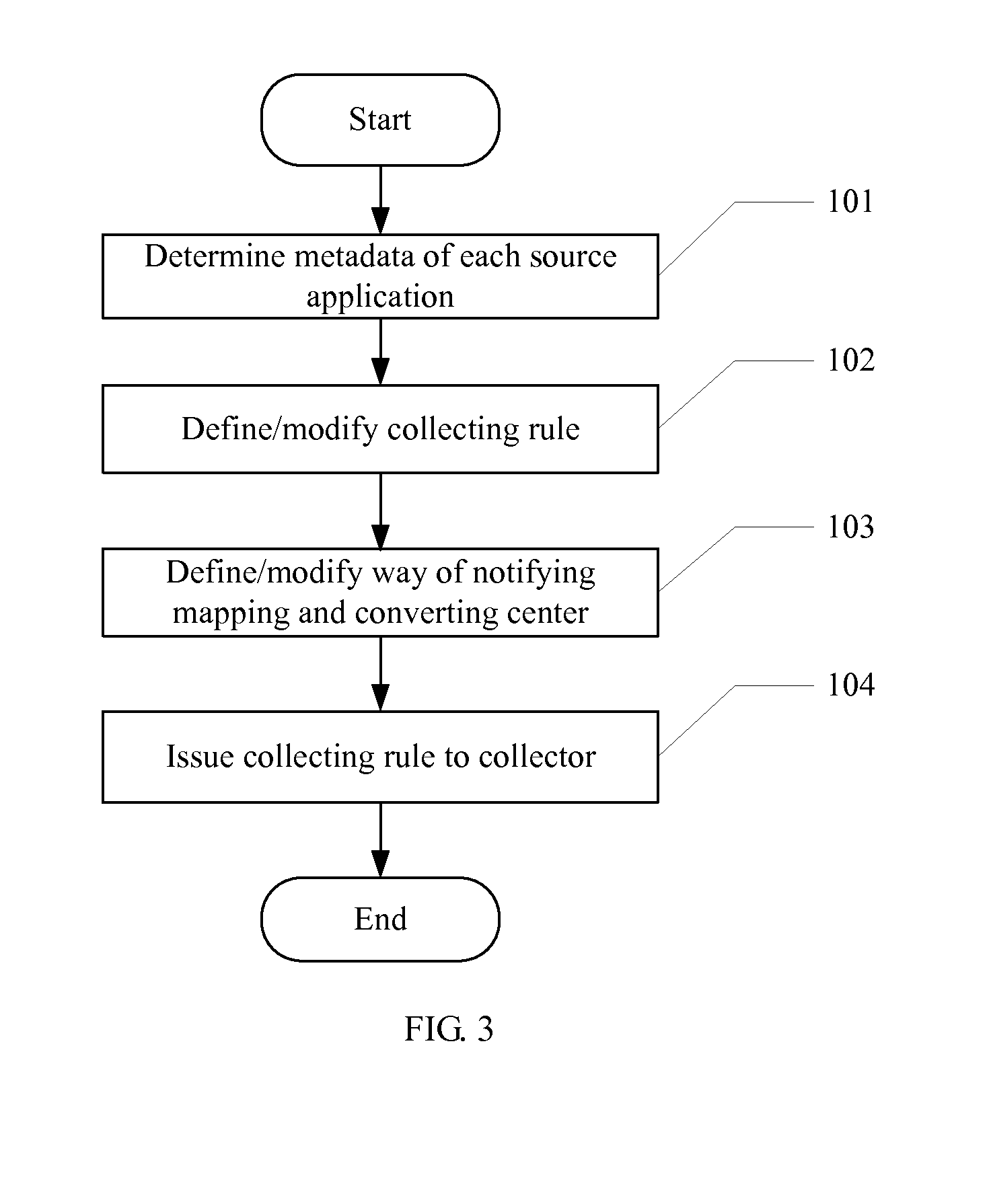Method and system for data synchronization
a data synchronization and data technology, applied in the field of data synchronization technology, can solve the problems of inability to real-time synchronize, large data flow, and complex telecommunication network, and achieve the effects of reducing the volume of data to be synchronized, ensuring network smoothness and network stability, and reducing network load
- Summary
- Abstract
- Description
- Claims
- Application Information
AI Technical Summary
Benefits of technology
Problems solved by technology
Method used
Image
Examples
Embodiment Construction
[0034]The invention will now be described in detail in conjunction with the embodiments and drawings of the invention.
[0035]Referring to FIG. 1, it is a functional block diagram of a system for data synchronization, according to one embodiment of the invention.
[0036]In this embodiment, the system for data synchronization includes a data collection unit 10 and a distribution unit 30. The data collection unit 10 may include one or more collectors, for collecting data from the source application, according to the source application information subscribed by a target application when change occurs in the source application data; and in FIG. 1, there are three collectors shown. Each collector may be set to trigger a collection event when change occurs in the source application data.
[0037]The data collection unit 10 may include a buffer unit 14. The collector may write the data collected to the buffer unit 14 in the unit of transaction; in other words, a transaction ID and operation seque...
PUM
 Login to View More
Login to View More Abstract
Description
Claims
Application Information
 Login to View More
Login to View More - R&D
- Intellectual Property
- Life Sciences
- Materials
- Tech Scout
- Unparalleled Data Quality
- Higher Quality Content
- 60% Fewer Hallucinations
Browse by: Latest US Patents, China's latest patents, Technical Efficacy Thesaurus, Application Domain, Technology Topic, Popular Technical Reports.
© 2025 PatSnap. All rights reserved.Legal|Privacy policy|Modern Slavery Act Transparency Statement|Sitemap|About US| Contact US: help@patsnap.com



